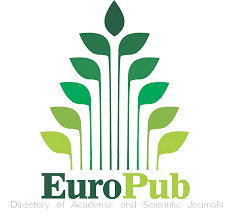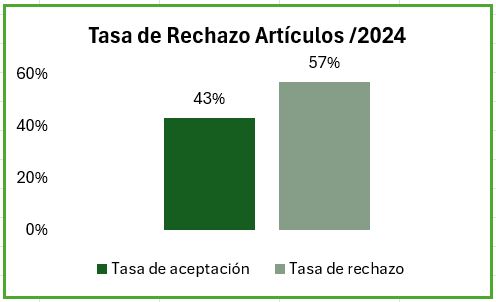Sustainability of agroforestry systems of special high altitude coffee in the south-eastern sector of the Loja canton
DOI:
https://doi.org/10.54753/blc.v13i2.1887Keywords:
agroforestry systems, coffee, indicators, dimensionsAbstract
Sustainability is understood as the harmonious development between economic and social development and environmental conservation, seeking to satisfy current requirements without compromising the necessary resources for future generations. In this research, the sustainability in the economic, social and environmental field of the Agroforestry Systems (SAF) of small producers of special coffee in the south eastern sector of the Loja canton was evaluated, in order to determine sustainability, the methodology proposed by Flores and Sarandón was applied, generating environmental, economic and socio-cultural indicators to estimate the General Sustainability Index (IsGen); it was considered in the study of variables on the family nucleus; the specific environmental, sociocultural and economic conditions of the SAF associated with specialty coffee. The determination of Sustainability estimated an IsGen of 2.38; where the ecological dimension contributed a value of 2.58; while the economic dimensions 2.75 and socio-cultural 1.82. It was established that the SAFs are not sustainable, highlighting that the environmental and economic dimensions turned out to be positive; however, the sociocultural dimension does not reach an assessment > 2, classifying it as negative or limiting; being necessary to emphasize that for a system to be sustainable, the economic, social and environmental criteria must have a value greater than two; in the same way, it is necessary to employ indicators in the areas of sustainability according to the study context.References
Añazco, J. M. (2017). Hacia la sustentabilidad de los sistemas agroforestales en el Ecuador continental...un aporte del árbol a la diversificación agrícola y ganadera. 49-71. http://repositorio.cidecuador.org/bitstream/123456789/15/1/Agricultura%20Sostenible%20del%20Ecuador.pdf
Baker, S. S., y García, M. (2020). JÓVENES, AGENTES PARA LA TRANSICIÓN HACIA UNA PRODUCCIÓN AGROECOLÓGICA EN EL SECTOR HORTÍCOLA PLATENSE. Revista Americana de Empreendedorismo e Inovação, 2(1), Article 1. https://doi.org/10.33871/26747170.2020.2.1.3361
Blanco, V. (2020). Incorporación del enfoque de género en el conocimiento sobre la biodiversidad. En Biodiversidad, agroecología y agricultura sustentable (1 era., pp. 320-340). Editorial de la Universidad de La Plata. http://sedici.unlp.edu.ar/bitstream/handle/10915/109141/Documento_completo.pdf-PDFA.pdf?sequence=1&isAllowed=y
Bravo, C., Marín, H., Marrero-Labrador, P., Ruiz, M., Torres, B., Navarrete, H., Durazno-Alvarado, G., y Changoluisa-Vargas, D. (2017). EVALUACIÓN DE LA SUSTENTABILIDAD MEDIANTE INDICADORES EN UNIDADES DE PRODUCCIÓN DE LA PROVINCIA DE NAPO, AMAZONIA ECUATORIANA. Bioagro, 29, 23-36.
Comisión Mundial sobre el Medio Ambiente y el Desarrollo. (1987). Informe de la Comisión Mundial sobre el Medio Ambiente y el Desarrollo.
Coordinación General de Información Nacional Agropecuaria. (2022). Informe de Rendimientos de Café grano oro 2021. Ministerio de Agricultura y Ganaderia. http://sipa.agricultura.gob.ec/descargas/estudios/rendimientos/cafe/resultados_rendimiento_cafe_2021.pdf
Dubrovsky, N. (2020). Tramas tróficas en los agroecosistemas: Una herramienta para evaluar la complejidad. En Biodiversidad, agroecología y agricultura sustentable (1era ed., pp. 165-237). Editorial de la Universidad de La Plata; ResearchGate. http://sedici.unlp.edu.ar/bitstream/handle/10915/109141/Documento_completo.pdf-PDFA.pdf?sequence=1&isAllowed=y
Fonseca, N. E. (2021). Propuesta metodológica para medir la sustentabilidad en agroecosistemas a través del marco MESMIS. Pensamiento udecino, 5(1), 143-160. https://doi.org/10.36436/23824905.344
GAD Vilcabamba. (2019). PDYOT 2019 – 2023 – GAD Vilcabamba. https://vilcabamba.gob.ec/pdyot/
Jumbo, N. (2020). Sustentabilidad de las fincas cafetaleras de la asociación de productores agropecuarios del cantón Chaguarpamba. Bosques Latitud Cero, 10(2), 113-123.
Márquez, F., Julca Otiniano, A., Canto, M., Soplin, H., Winstanley, S., y Fernández, P. (2016). SUSTENTABILIDAD AMBIENTAL EN FINCAS CAFETALERAS DESPUES DE UN PROCESO DE CERTIFICACIÓN ORGÁNICA EN LA CONVENCION (CUSCO, PERÚ). Ecología Aplicada, 15, 125. https://doi.org/10.21704/rea.v15i2.752
Méndez, M. S., Otiniano, A. J., y Ventura, R. B. (2016). Sustentabilidad de fincas productoras de café en Jipijapa (Manabí, Ecuador). Saber y Hacer, 3(1), Article 1.
Mendoza, G. L. (2021). Boletin_situacional_cafe_2021.
Ministerio de Agricultura. (2023). Sistema de Información Pública Agropecuaria del Ecuador—SIPA. http://sipa.agricultura.gob.ec/
Ministerio del Ambiente. (2019). Plan de Restauración de Paisaje 2019—2030. https://faolex.fao.org/docs/pdf/ecu197256.pdf
Montero, A. (2017). Rendimientos de café grano seco en el Ecuador. Dirección de análisis y procesamiento de la información-MAGAP.
Organización de Naciones Unidas. (2015). La Agenda para el Desarrollo Sostenible—Desarrollo Sostenible. https://www.un.org/sustainabledevelopment/es/development-agenda/
Paleologos, M., Iermanó, M. J., Blandi, M., y Sarandón, S. (2017). Las relaciones ecológicas: Un aspecto central en el rediseño de agroecosistemas sustentables, a partir de la Agroecología. REDES, 22, 92-115. https://doi.org/10.17058/redes.v22i2.9346
Parroquias | Municipio de Loja. (2023). https://www.loja.gob.ec/contenido/parroquias
Ramírez, I. G. S., Castro, I. S., Mendieta, I. D. R., Hidalgo, I. S. G., Carrión, I. L. S., y Añazco, I. I. L. (2015). PDOT GAD Malacatos.
Santistevan, M., Julca, A., Borjas, R., y Tuesta, O. (2014). CARACTERIZACIÓN DE FINCAS CAFETALERAS EN LA LOCALIDAD DE JIPIJAPA (MANABÍ, ECUADOR). Ecología Aplicada.
Sarandón, S. (2020). Biodiversidad, agroecología y agricultura sustentable. http://sedici.unlp.edu.ar/bitstream/handle/10915/109141/Documento_completo.pdf-PDFA.pdf?sequence=1&isAllowed=y
Sarandón, S., y Flores, C. (2009). Evaluación De La Sustentabilidad en Agroecosistemas: Una Propuesta Metodológica |. https://www.academia.edu/45285824/Evaluaci%20%C3%20%B3n_De_La_Sustentabilidad_en_Agroecosistemas_Una_Propuesta_Metodol%20%C3%20%B3gica
Sarandón, S., y Flores, C. (2014). Agroecología: Bases teóricas para el diseño y manejo de Agroecosistemas sustentables.
Sarandón, S. J., Zuluaga, M. S., Cieza, R., Janjetic, L., y Negrete, E. (2004). EVALUACIÓN DE LA SUSTENTABILIDAD DE SISTEMAS AGRÍCOLAS DE FINCAS EN MISIONES, ARGENTINA, MEDIANTE EL USO DE INDICADORES. Agroecología, 1, 19-28.
SUIOS - Sistema Unificado de Información de Organizaciones Sociales. (2023). https://sociedadcivil.gob.ec/nuevo_directorio
Venegas, S., Orellana Bueno, D., y Pérez Jara, P. (2018). La realidad Ecuatoriana en la producción de café. RECIMUNDO, 72-91. https://doi.org/10.26820/recimundo/2.(2).2018.72-91
Published
How to Cite
Issue
Section
License
Copyright (c) 2023 Bosques Latitud Cero

This work is licensed under a Creative Commons Attribution-NonCommercial-ShareAlike 4.0 International License.
This work is published under the Creative Commons Attribution-NonCommercial-ShareAlike 4.0 International (CC BY-NC-SA 4.0) license. This means that users may copy, distribute, and adapt the content, provided that proper credit is given to the authors and the journal. Commercial use of the material is not permitted. Additionally, any derivative work must be distributed under the same license. This license ensures open access to knowledge, promoting the dissemination and reuse of published works for non-commercial purposes, respecting authorship, and ensuring the free circulation of content under fair terms.




























